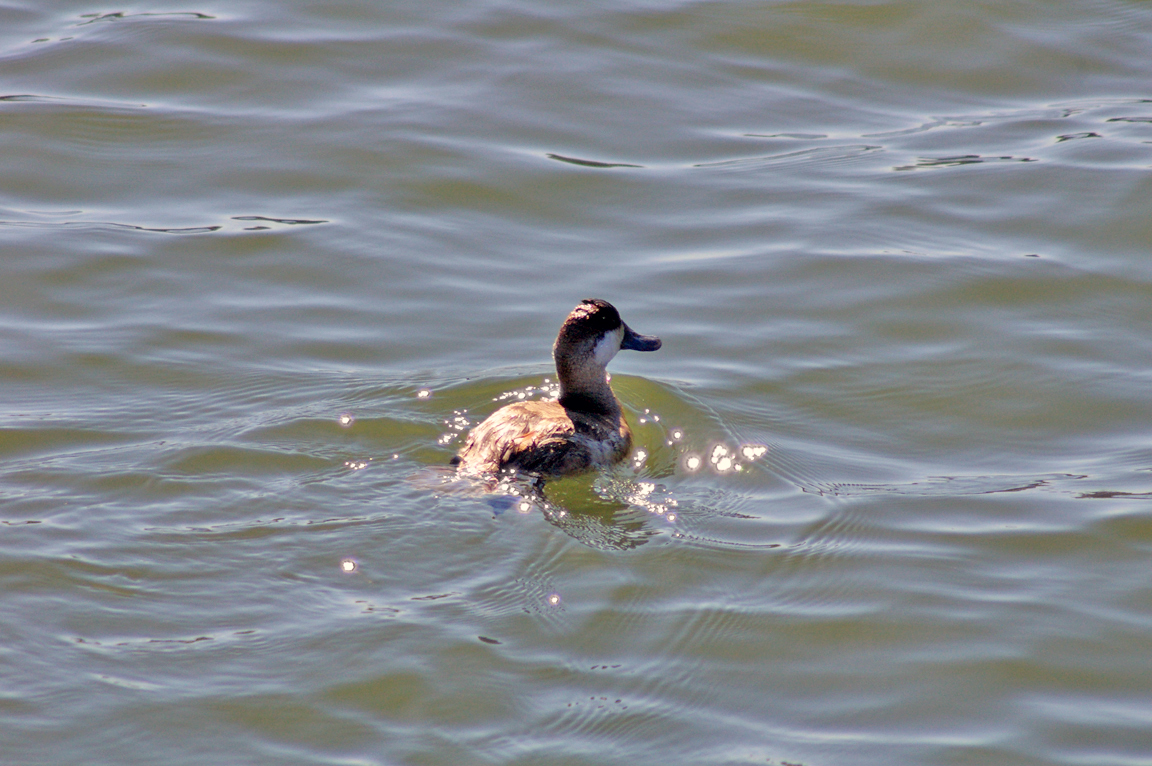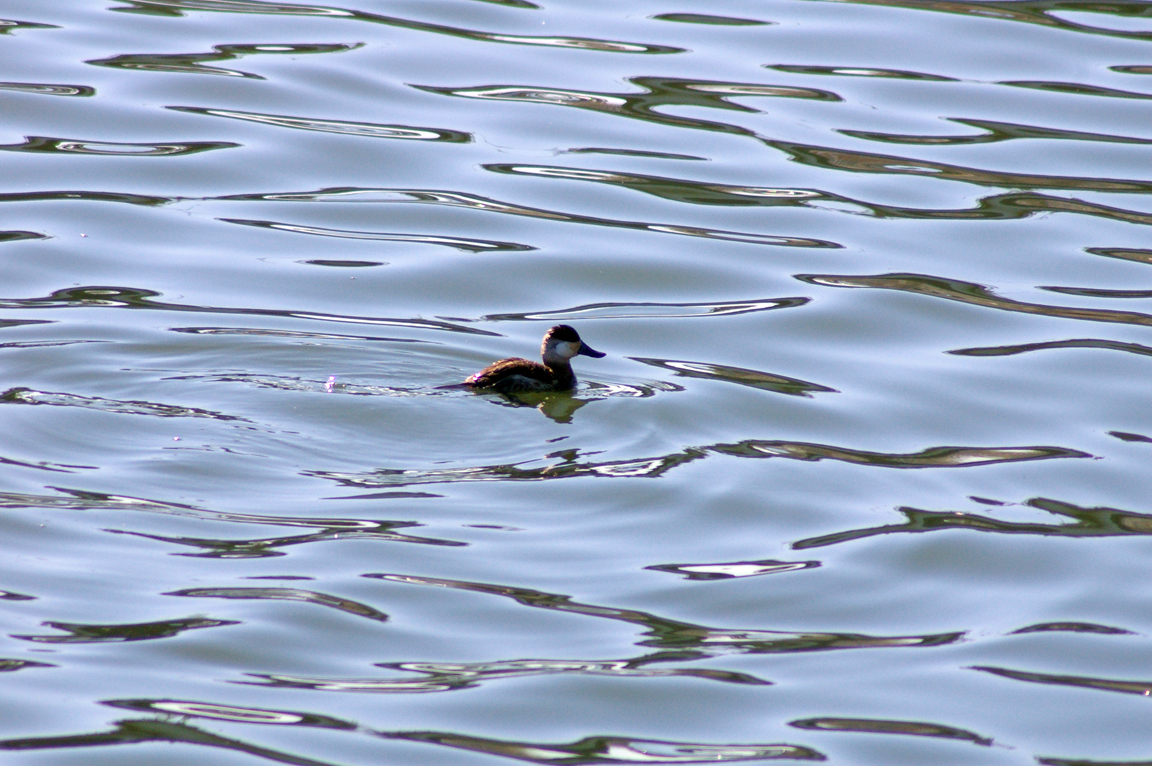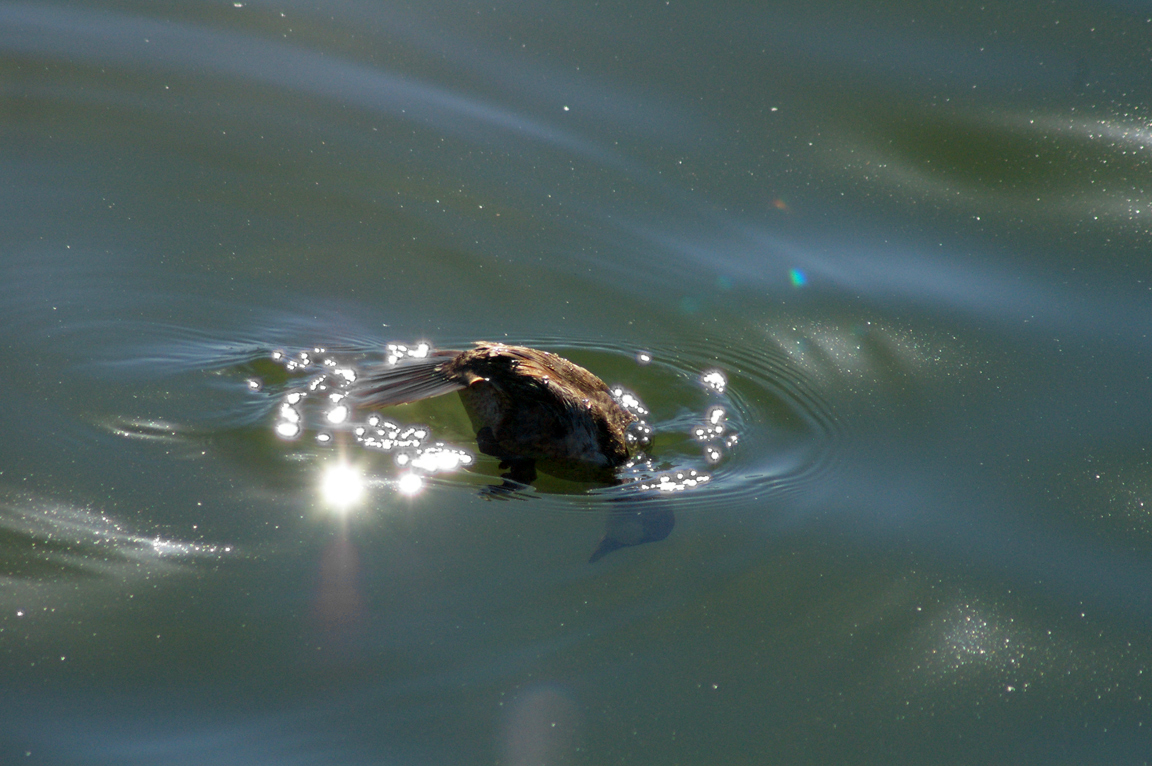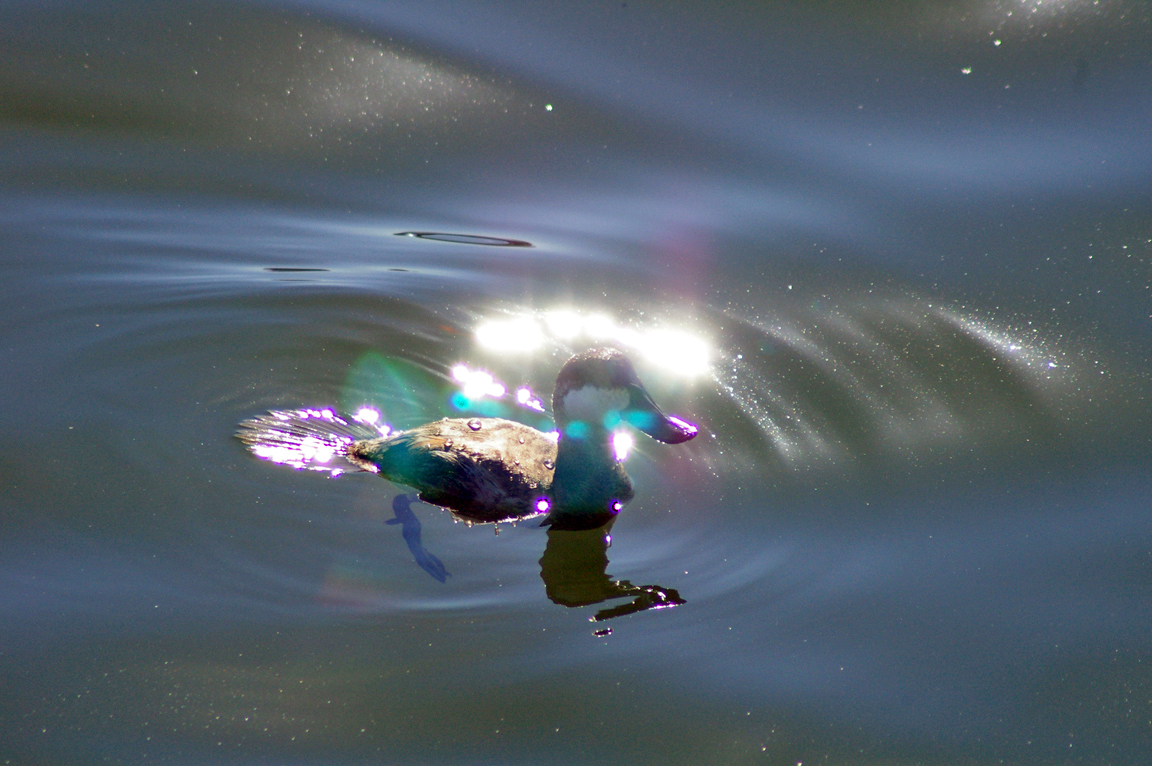|
|
|
 |
Black Scoter
|
| Melanitta nigra | |
A coastal duck that breeds in the subarctic, the Black Scoter is not well studied in North America. Only a few nests have ever been found.
Interesting Information
-
The Black Scoter is divided into two subspecies. In the form found in Europe, the "Common Scoter," the male has a larger swollen knob at the base of the upper bill that is black on the sides with a yellow stripe on top, not entirely yellow.
-
The Black Scoter occasionally does a "Wing-flap" display while swimming, flapping its wings with its body held up out of the water. Unlike other scoters, it almost always punctuates a Wing-flap with a characteristic downward thrust of head, as if its neck were momentarily broken. Surf and White-winged scoters keep their heads and bills pointing more or less above the horizontal throughout a Wing-flap.
-
The Black Scoter is among the most vocal of waterfowl. Groups of Black Scoters often can be located by the constant mellow, plaintive whistling sound of the males.
Description
Adult Description
-
Size: 43-53 cm (17-21 in)
-
Wingspan: 84 cm (33 in)
-
Weight: 862-1270 g (30.43-44.83 ounces)
-
Stocky diving duck.
-
Black.
-
No white in wings.
-
Male all black with swollen yellow or orange knob at base of bill.
-
Female blackish with large whitish face patch.
-
Eyes dark brown.
-
Legs brownish black, joints darker.
Sex Differences
Male solid black with bright knob at base of bill, female more brown, with large whitish face patch and without bill knob.
Male solid black with bright knob at base of bill, female more brown, with large whitish face patch and without bill knob.
Male
Black with metallic gloss. Side and flank feathers long and pointed. Eyelids yellow. Swollen orange-yellow knob on base of upper bill, divided by black along middle of upper surface.
Female
Sooty brownish. Dark cap contrasting sharply with pale grayish brown feathers on rest of head. Sides and flanks paler with indistinct barring. Bill not swollen or only slightly, may have hint of yellow.
Immature
Similar to adult female but with white belly.
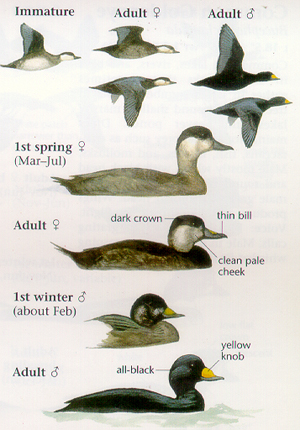
Photo taken from: The Sibley Field Guide by David Allen Sibley
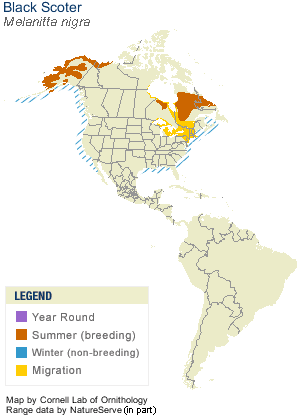
© 2003 Cornell Lab of Ornithology
|
Habitat |
|
Breeds on small lakes. Winters in coastal waters, especially over rocky bottoms. |
|
Behavior |
|
Dives for prey on or near bottom. |
|
Food |
|
Aquatic invertebrates, especially aquatic insects and mollusks, a little vegetation. |
Taxonomy
| Kingdom: | Animalia |
| Phylum: | Chordata |
| Subphylum: | Vertebrata |
| Class: | Aves |
| Order: | Anseriformes |
| Family: | Anatidae |
| Subfamily: | Anatinae |
| Genus: | Melanitta |
| Species: | Melanitta nigra |
| Subspecies: | Melanitta nigra americana |
| Melanitta nigra nigra |
Similar Species |
|
|
Bird Sound |
|
Wings make whistling noise in flight. Male gives clear whistle in courtship. Female give grating "kraaa." |
|
Eggs look like this |
|
Photo taken from: ARCTOS Collaborative Collection Management Solution |
